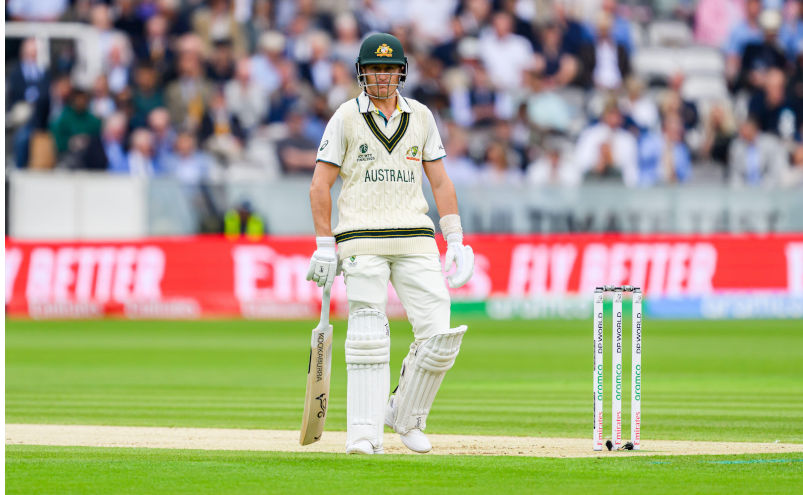Is this the moment that will define cricket's future?
October 12, 2025
On 8 October, what may turn out to be a huge moment for the game of cricket hit the news: Australian Test captain Pat Cummins and all-format Australian player Travis Head were reported to have been offered nearly $10 million each a few months ago to join cricket’s international T20 circuit.
This would involve them abandoning Test cricket. It might be the equivalent of the moment in 1977 when Kerry Packer dropped his bomb on the then Australian Cricket Board, buying up almost the whole Australian Test team for what became his breakaway World Series Cricket. The Test team, former captain Ian Chappell famously wrote later, was playing for “dry cleaning money” in those days while the Board took in large sums from generally healthy crowds.
What Packer did heralded a revolution in the game. Short-form (50 overs-per-side) cricket became central to international cricket, and a diminished Australian Test side was gutted to the point that it lost an Ashes series by an unprecedented 5-1 margin at home in 1978-79. Australia’s “official” team recovered only when Packer and the ACB, each bleeding from the financial costs the battle for ownership of the game had imposed on them, made peace. Tests and one-day internationals thereafter shared the spotlight each southern summer, and Packer’s players returned to the ACB fold with improved remuneration.
Some history here will provide context on what was happening. The later 1950s and 1960s had been, as later became clear, pretty turgid periods for Test cricket. Rates of scoring were low and draws common; not losing Tests became a goal in itself, possibly more important than victory.
The 1960-61 series between Australia and the West Indies was a welcome exception. The two sides waged an enthralling season-long battle incorporating the famous tied Test at Brisbane. But it was also the case that Sir Donald Bradman, then the chair of the ACB, had exhorted the two captains (Frank Worrell and Richie Benaud, both of blessed memory) before the series began to ensure their teams played attractive cricket. Bradman feared the game was losing public support. Crowds had been in danger of drifting away, as they already had from Sheffield Shield games, the interstate competition.
That 1960-61 series was a false harbinger of a new dawn. Later series, especially between Australia and England for the Ashes, saw a return to attritional cricket and many drawn matches. There were exciting series from time to time, especially during the first half of the 1970s, but trouble was brewing. It came in the form of Packer in 1977.
The West Indies, which dominated Test cricket with devastating fast bowling and dashing batting from the late 1970s to the mid-1990s, were close to unbeatable during those years. But since then, they have declined and are now easy to defeat. The best Caribbean players, tellingly, are no longer available for Tests because they are fully engaged in the T20 leagues which have sprouted and spread over the past 15 years.
These leagues are owned and operated by billionaires, mostly from India. There are many, in the countries that play Test cricket, and in others like the US and the UAE, and they offer huge salaries – in some cases, millions of US dollars, for top players for a couple of months. The money comes from TV rights and huge crowds, especially in cricket-mad Indians. The boards, which control the game at the national level, cannot compete in financial terms.
T20 has benefitted cricket in many ways, with new shots like the ramp and the reverse sweep being invented, batsmen/batswomen learning to score quickly while minimising the risk of dismissal and bowlers learning how to restrict scoring. Fielding has greatly improved: brilliant catches and heroic diving stops are now commonplace. Rates of scoring have risen, and Test cricket has been made more interesting as the new ways pioneered by T20 have filtered through. The old scourges of slow scoring and drawn Test matches have largely disappeared.
But there is a risk that the balance of the game has been tilted. T20 might now be in the process of cannibalising Test cricket, and the offers to Cummins and Head indicate where the game might be headed as top players seek riches previously undreamed of. It seems increasingly likely that the best cricketers will eschew their Test ambitions for T20 riches, and Tests will become the domain of the second tier of players.
This is exactly what has happened to the West Indies. The best players in the Caribbean no longer play Tests, and the Test team is performing so poorly that the future of Test cricket in the West Indies is at real risk.
Cricket survived the Packer revolution intact, and with a renewed structure: Tests and one-day internationals, controlled by the International Cricket Council and its constituent boards like the ACB, shared the stage. It was not an uncomfortable accommodation. People voted for the new reality, crowds were generally healthy and rivers of gold flowed to the Boards from the television companies. A balance was struck between the game’s formats.
Now, though, a different kind of balance is needed – one between Tests run by boards and T20 matches run by the leagues. But an accommodation like the one negotiated in 1979 seems unlikely to be achieved. T20 might be about to rule unchallenged, with Test sides gutted of the best talent. Crowds for Tests will likely decline and the Test product will not attract the same interest from television companies. The dominance of T20 cricket will become entrenched.
Does this represent a healthy future for cricket?
The views expressed in this article may or may not reflect those of Pearls and Irritations.

